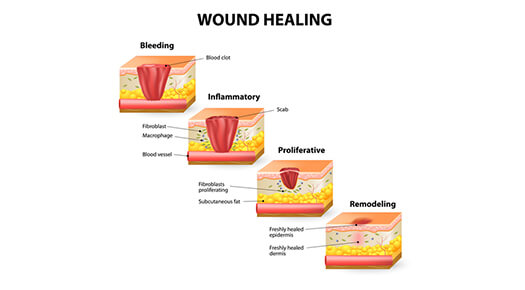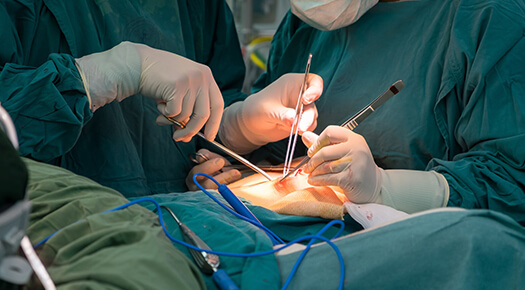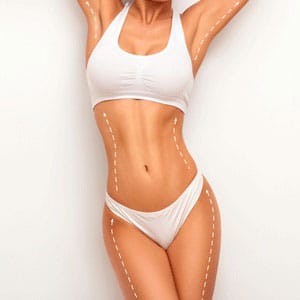Overview
Wounds and trauma to the body can have lasting results. They can severely affect the aesthetics of the body, therefore requiring plastic surgery as a reconstructive measure. Scar revision is plastic surgery performed to improve the condition or appearance of a scar anywhere on your body

Introduction
A traumatic wound is a sudden, unplanned injury that can range from minor, such as a skinned knee, to severe, such as a gunshot wound. Traumatic wounds include abrasions, lacerations, skin tears, bites, burns, and penetrating trauma wounds.
Scar revision is surgery to improve or reduce the appearance of scars. It also restores function, and corrects skin changes (disfigurement) caused by an injury, wound, poor healing, or previous surgery.
Quick Links
- What Is Trauma, Wound Coverage And Scar Revision?
- Who Is An Ideal Candidate For Trauma, Wound Coverage And Scar Revision?
- What To Expect At The Consultation With Dr. Abizer Kapadia?
- How Trauma, Wound Coverage And Scar Revision Is Performed?
- How Is Recovery After Trauma, Wound Coverage And Scar Revision?
What Is Trauma, Wound Coverage And Scar Revision?
Wounds and trauma to the body can have lasting results. They can severely affect the aesthetics of the body, therefore requiring plastic surgery as a reconstructive measure. Using reconstructive surgery to cover trauma and wounds also protects the area further. Most of the problems surrounding wound and trauma are related to the resulting scar. Scar revision is, therefore, the foremost concern for most patients requiring trauma and wound coverage. This is why Dr Abizer Kapadia specializes in scar revision and treatment.

Who Is An Ideal Candidate For Trauma, Wound Coverage And Scar Revision?
following are the guidelines for who can receive Trauma, Wound Coverage And Scar Revision and why:
- You have suffered from second degree or deep burns.
- You have a large scar from a wound that healed poorly.
- You have a depressed scar that looks very unaesthetic and draws unwanted attention.
- Your skin has gotten discoloured due to the scar, and the difference is very evident.
- You have undergone surgery that resulted in scars or the need for reconstruction.
What To Expect At The Consultation With Dr. Abizer Kapadia?
Dr. Abizer Kapadia gives the utmost importance to the consultation as it is the step where you understand the procedure, all the aspects of it, and analyze your comfort level with the doctor and his/her staff. During the consultation, Dr. Abizer Kapadia will guide you through the whole process with all the details and will discuss different procedures, the suitable procedure for you, preparation for the surgery, and recovery process, helping you make an informed decision. Dr. Abizer will also discuss and understand your reasons for getting surgery and help you have realistic goals and expectations from the surgery.
During the consultation, you should prepare yourself for a physical examination and to discuss your medical history, previous surgeries, drug allergies, medical conditions, and other such topics concerning your health. Dr. Abizer also urges his patients to ask questions and queries to resolve any doubts they may have regarding the surgery, procedure, risks involved, results as his utmost priority lies in the safety and satisfaction of his patients.
Before / After Images
Client Results
How Trauma, Wound Coverage And Scar Revision Is Performed?
Surgical Treatments –
Deeper scars may require surgical treatment. Here, an incision is made so that Dr Kapadia can take a layered approach. This means he closes the various incisions under the skin in layers. Layered closure is often used when the excision extends below the skin surface or is in high movement areas.
The first step, or layer, requires sub-dermal closure (below the skin surface) with absorbable or non-removable sutures. Layers of closure continue to build, ending with the remaining surface wound.

Other techniques used in this approach include:
- Flap Closure: Taking muscle, skin or bone from a different area of the body and using it as a flap allows for the repositioning of the scar. This can make it more inconspicuous.
- Skin Grafts: Skin grafts are particularly used for burn victims. Here, the skin is taken from a well-hidden area and used to cover the burn scarring.
- Tissue Expansion: The preferred alternative to skin grafts, tissue expansion involves an inflatable balloon called a tissue expander placed under the skin near the scar site. Over time, the balloon is slowly filled with a sterile solution, expanding the area of healthy skin. Once the skin has stretched sufficiently, the expander and scar are removed. The stretched skin is then moved to replace the scar tissue.
Non-Surgical Treatments –
Scar Revision:
Scar revision is the procedure that tackles the scar, correcting it and removing it. This is performed in many ways. Depending on the kind of scar you have, you may undergo either topical or surgical treatment for the scar.
Discoloration or surface irregularities and other more subtle scars can be cosmetically improved by surgery. These types of scars do not impair function or cause physical discomfort and include acne scars as well as scars resulting from minor injury and prior surgical incisions.

Topical Treatments: Topical treatments, such as gels, tapes or external compression, help in wound closure and healing, additionally reducing the skin’s ability to produce irregular pigment. These products can treat existing surface scars and discolouration, therefore aiding in the healing of scar revision procedures.
Injectable Treatment:
Dermal fillers can fill depressed or concave scars. Depending on the substance used and your scar conditions, results can last between three months to several years. Therapy must be repeated to maintain results. Steroidal-based compounds are another form of injectable therapy, which reduce collagen formation. They alter the appearance, size and texture of raised scar tissue.
Click here to know more about dermal fillers.

Surface Treatments: Surface treatments are very popular scar revision methods. They soften surface irregularities and reduce uneven pigmentation. These treatment options include:
- Dermabrasion, which is the mechanical polishing of the skin.
- Laser or light therapy, which changes to the surface of the skin, allowing new, healthy skin to form at the scar site.
- Chemical peel solutions, which penetrate the skin’s surface, softening irregularities in color and texture.
- Skin bleaching agents, which are applied topically to lighten the skin.
How Is Recovery After Trauma, Wound Coverage And Scar Revision?
In the initial healing phase, you may notice some localised swelling, discolouration or discomfort. This can last up to 2 weeks. Healing continues after that for several weeks. Any new scar caused by the surgery refines and fades with time.
You get extremely long-lasting and natural-looking results from the scar revision surgery. Although it can take several months for you to see the final results, they get better every day.

Book Appointment
You Might Be Interested In

Skin Cancer Removal & Reconstruction
Overview Skin cancer removal procedure includes surgically removing cancerous and other skin lesions using specialized techniques to preserve your health and your appearance. Introduction Skin

Creation of A-V Fistula for Renal Dialysis
Overview An AV fistula is a connection that’s made between an artery and a vein for dialysis access. Introduction If you have been diagnosed with

Hand Surgery
Overview Hand surgery is very specialized surgery that can treat diseases that cause pain and impair the strength, function and flexibility of your wrist and
- Hours
-
Timing - 8:00 am to 6:00 pm on Monday to Thursday
Saturday 9:00 am to 5:00 pm - Friday, Sunday : Closed






















